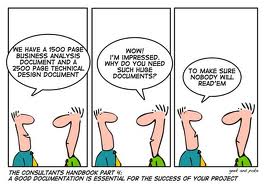The results are in from most of the top names in on-premises ERP software, and the results are clear: SAP is leading, Infor and Epicor are doing well, but Oracle is lagging big time.
SAP on Friday released preliminary numbers for its fourth quarter ended Dec. 31, 2011, that showed software revenue increased 16% over the year-earlier period (17% in constant currencies) to 1.74 billion Euros ($2.2 billion). Software and software-related services revenue were up 12% over Q4 2010 to 3.72 billion euros ($4.7 billion), handily beating analyst's estimates of 3.6 billion Euros.
By contrast, Oracle's software sales for its fiscal second quarter ended Nov. 30 were up just 2% compared with the year-earlier quarter, whereas analysts expected at least a 7% increase.
The contrast is even sharper if you separate software revenues by type. Oracle's new-license revenues for databases and middleware were up 4% while applications revenue--primarily ERP and CRM--actually declined by 2%. Oracle blamed the overall shortfall on purchase delays tied to new internal approval requirements at customer firms.
In a statement, SAP claimed "significant" market share gains and declared "our innovation strategy is winning."
Backing up the innovation claim, SAP said sales of Hana, the company's in-memory appliance for real-time analytics exceeded its 100 million euro ($127 million) 2011 sales target by generating more than 160 million euros ($202 million) in sales.
SAP was not alone in reporting robust enterprise application revenues. Epicor on Thursday issued a preliminary report that software revenues increased in the range of 8% to 10% during the three-month period ended Dec. 31 (its first fiscal quarter). Total revenue for the quarter is expected to be $218 million to $219 million, up 4% to 5%.
Private equity firm Apax Partners acquired and merged Epicor Software and Activant Solutions last year to create a larger ERP and retail software vendor under the Epicor name. The firm's annual revenues are likely to exceed $800 million in 2012. The Q1 estimate of an 8% to 10% increase was for organic growth over and above the combined results of the two formerly separate companies.

Infor reported earlier this month that its software license revenue grew 16% over the year-earlier period in its second fiscal quarter ended Nov. 30, the same time period in which Oracle suffered a 2% decline. Infor acquired Lawson Software last year and is now the third largest ERP vendor after SAP and Oracle, with revenues expected to exceed $2.5 billion. The 16% increase at Infor did not include results from Lawson.
Microsoft is estimated to fall between Infor and Epicor in enterprise apps revenue, but the software giant does not break out financial details of its comparatively small Microsoft Dynamics business.
So with SAP and Infor posting double-digit gains and Epicor verging on that territory in its most recent quarter, what's the matter with Oracle? As I wrote earlier this month, Oracle customers may be suffering from what Nomura equities analyst Rick Sherlund dubbed "Fusion confusion," a reference to the new Fusion application suite Oracle rolled out in 2011.
"Contacts tell us that Fusion may be freezing Oracle out of the final stages of some apps deals as customers resist buying the old product but are not convinced the new Fusion suite is ready for prime time," Sherlund told StreetInsider.com .
Oracle portrays Fusion as its long-term replacement for Oracle E-Business Suite, PeopleSoft and JD Edwards ERP systems, and Oracle and Siebel CRM systems. The Fusion Suite is designed to be delivered as a service from the cloud or run on premises. But Oracle is not heavily promoting Fusion. Instead, Oracle is trying to get people to ease in pieces of Fusion with what it calls a "co-existence strategy and architecture" for Oracle E-Business Suite, PeopleSoft, JD Edwards and Siebel apps, and Fusion.
In the case of PeopleSoft, for example, Oracle suggests the combination of PeopleSoft's financial and human capital management software with Fusion Talent Management. PeopleSoft also offers talent management capabilities, but they were only recently introduced, so customers might want to jump directly to the cloud-deliverable Fusion version of that application.
The coexistence strategy surely appeals to customers that want to avoid the chaos of rip-and-replace software deployments. But it also presents the dilemma of when to choose stability and when to opt for Fusion features including services-based delivery, role-based interfaces and embedded business intelligence.
Oracle and SAP are both selling the same idea: Keep the legacy core of software we've sold you, and buy our innovative new software that goes with it. SAP calls it "innovation on top of a stable core." The core is the single application code base of Business Suite 7, which SAP has committed to support with maintenance through 2020. In the latest quarter at least, it appears SAP's brand of innovation is winning.
Source:InformationWeek Author:Doug Henschen
 English
English  Vietnamese
Vietnamese 
